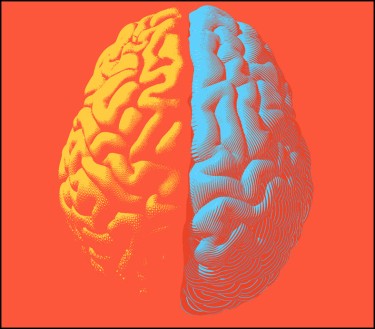
Solving the Cannabis DUI Puzzle?
Cannabis is undeniably nearing full legalization in the US and many other countries. As such, cannabis use has increased significantly in recent years since it was legalized in many states, and social acceptance is at an all-time high. Cannabis is now the second most consumed substance after alcohol. While the effects of alcohol on the body are well known, cannabis is a far more complex substance that can affect users differently depending on the type of product and strain, the amount consumed and how well they can tolerate it.
According to studies, cannabis works very differently in the body than alcohol. However, there is no reliable test for impairment from active cannabis. THC levels in saliva, blood, and breath are not accurate indicators of active impairment. In addition, too little attention has been paid to the precise characteristics of eye movement and the changes that develop due to impairment. That’s why Gaize is dedicated to the safe legalization of cannabis by developing the first reliable, comprehensive, and scientifically defensible cannabis impairment test.
Cannabis Impairment
Blood levels of THC and its metabolites are insufficient to demonstrate impairment. Evidence of additional evidence of impairment is required to determine impairment.
The primary explanation for the discrepancy between blood THC levels and impairment is that impairment occurs in the brain, not the blood. Therefore, THC moves through the body in a complicated way due to its chemical composition. Since the blood and brain are physically isolated tissues, blood concentrations of any substance can only predict brain concentration and impairment.
Because alcohol is very soluble in water and spends most of its time in the blood, estimating alcohol impairment in the brain based on blood alcohol levels is fairly accurate. THC, on the other hand, is more absorbed in fat/oil than water, making estimation of brain concentration/impairment difficult.
This implies that THC needs only a short time in the blood before it is distributed throughout the body and deposited in adipose tissue. THC concentrations in the brain and blood rise rapidly after initiation of smoking, causing impairment. Blood concentrations drop rapidly after smoking cessation, as no more THC enters the bloodstream and what’s left in the blood is distributed to fatty tissue. The THC remains in the adipose tissue for a longer period of time. Still, tiny amounts slowly leach out and back into the bloodstream over time, resulting in consistently low levels of THC in the blood.
This low level of THC in the blood is not enough to produce the high concentration required for brain impairment. THC levels in most blood tests are relatively low. Because THC in the blood can be from past and current use, it is impossible to distinguish between the two or infer impairment. THC impairment is currently best recognized by impairment symptoms.
Gaize’s clinical study on the impairment of cannabis
On November 17, 2022, Gaize, Inc. announced the completion of the world’s largest clinical study evaluating cannabis impairment. Gaize’s handheld, non-invasive testing device was used in the 350-person study to assess changes in pupillary reflex and response to eye movements.
Gaize is based on Drug Recognition Expert’s well-established scientific eye tests and measures the micro-movements of the eyes. Tests are automated, eliminating errors and paving the way for successful prosecutions. According to the co-director of the UC San Diego Center for Medicinal Cannabis Research, Thomas Marcotte, there is a major push in the field to investigate what we can do to better diagnose behavioral functioning and impairments rather than relying solely on fluid measurements to leave.
The study was conducted in collaboration with Dicentra, a Contract Research Organization (CRO) based in Toronto, Canada. It included measurements of subjects before and after ingesting legally available cannabis. According to Radivoje Janjic, Dicentra’s regulatory affairs specialist, Dentra made a dual contribution to the study.
“Firstly, to enable safe data collection with the Gaize device before and after ingestion of cannabis, and secondly, to ensure the safety of participants while they are impaired and using the device.” The Gaize gadget is a bespoke one Virtual Reality (VR) headgear with integrated eye-tracking sensors. It performs a series of computer-assisted eye movement and pupil response tests while recording high-resolution eye-tracking data and video. To assess active impairment from cannabis use, this data can be analyzed using machine learning and statistical methods.
Rob Lass, Gaize’s Chief Technology Officer, described the results of the study as “excellent”. “We subject our wares to rigorous testing.” “We were able to glean crucial insights into how cannabis impairments show up in eye movements based on the data we collected, and make algorithmic modifications in preparation for commercial launch,” added Lass. Gaize expects the device to be available in late 2022.
Since THC from cannabis use can remain in the body for weeks after the last use, assessing the THC concentration in the body does not predict impairment in the user. Numerous scientific studies have shown that blood, saliva and breath tests are only useful for determining previous consumption. Gaize is at the forefront of providing a solution to a significant security concern, as no product can accurately detect cannabis impairment in real-time.
“We would like to congratulate Gaize on the successful result of this clinical study,” says dicentra partner Peter Wojewnik. “The Gaize device proposes a new way to identify active impairment caused by cannabis use.” The possible effects of this gadget on safety at work and on the road are extremely exciting for me and everyone at dicentra! We’re glad we took part in the study and can’t wait to see the excellent disruption this item is bringing to the world. “
Gaize is already accepting reservations from law enforcement and companies, with employees concerned for their safety. The test takes about 6 minutes to complete and requires no additional training. Video footage also supports all testing, which is a critical element for law enforcement. Gaize is laying the foundation for safer streets and workplaces by addressing the lack of technology that can detect active impairment from cannabis.
About Gaize
Gaize is an automated testing device that detects and records evidence of impairment. Law enforcement agencies and businesses can use Gaize to collect accurate, actionable evidence of cannabis use and other impairments. With cannabis legalized, we are here to protect highways and businesses.
Gaize was designed with a single purpose. They envision a world where the inevitable legalization of cannabis has been met with technologies that keep streets and workplaces safe. They are confident that their computerized eye motor testing method is ideally suited to the problems that cannabis impairment presents.
CANNABIS DUI IDEAS, READ MORE…

CANNABIS Breath Testers Don’t Work, Are Brain Scans Next?

Post a comment: